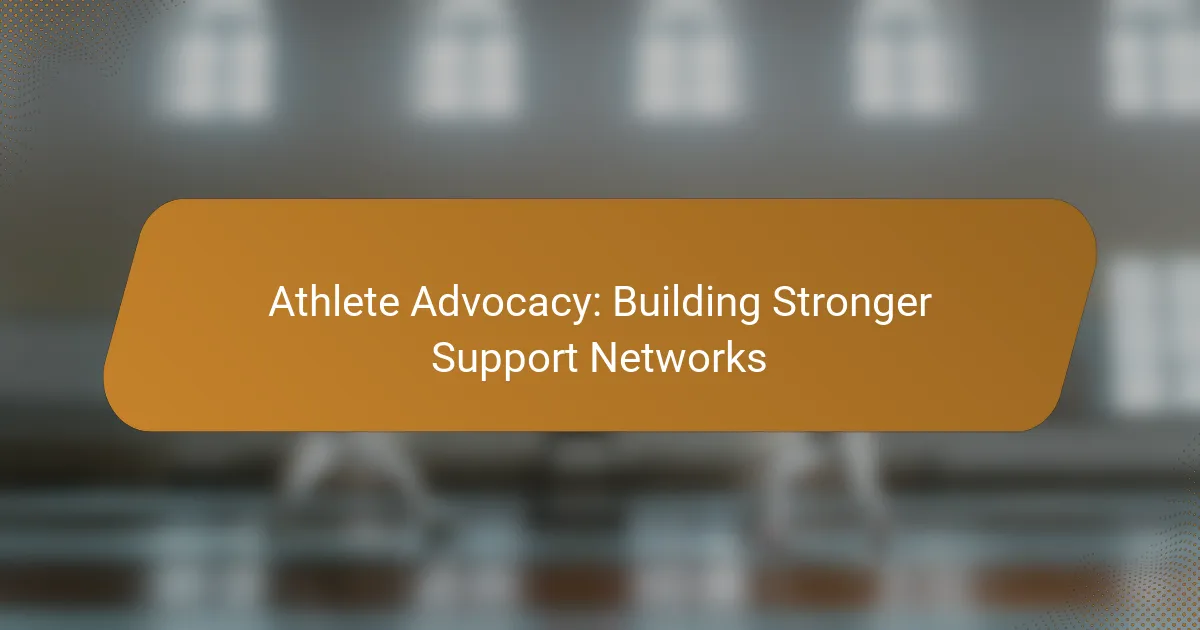Athlete advocacy is crucial for building stronger support networks that enhance mental health and community engagement. Athletes face challenges in developing these networks due to time constraints and stigma. Organizations like the Professional Athletes Association work to improve athlete welfare through policy changes and resource availability. Innovative strategies, including social media outreach and community involvement, empower athletes to foster connections and drive social change.
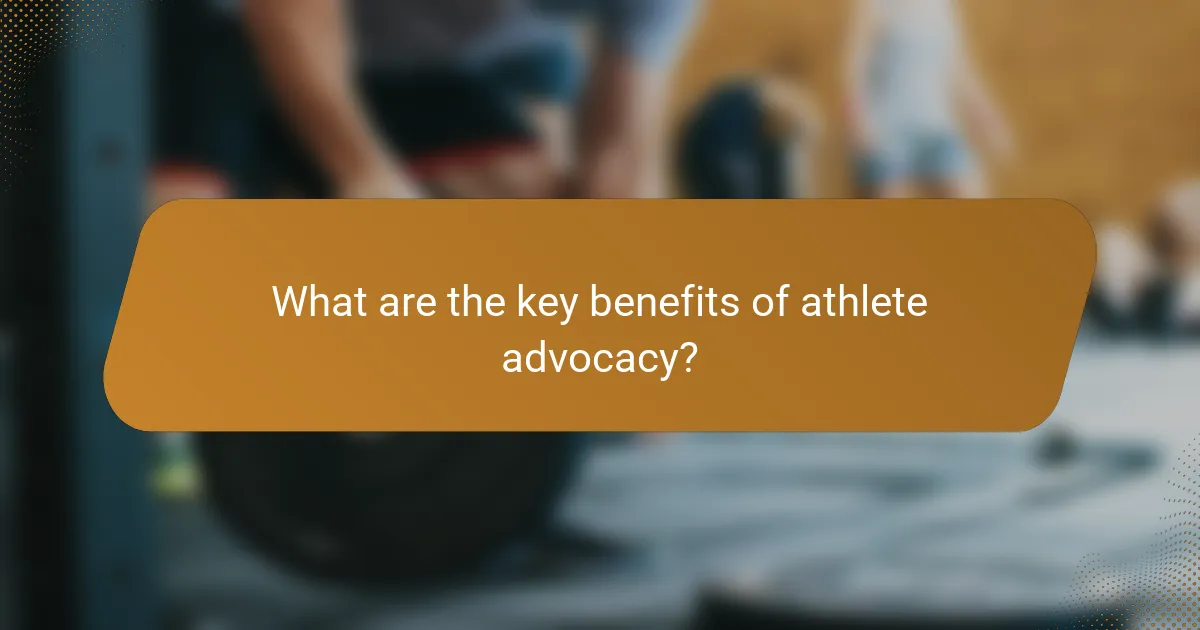
What are the key benefits of athlete advocacy?
Athlete advocacy strengthens support networks by promoting mental health, enhancing community engagement, and fostering social change. This advocacy empowers athletes to voice concerns, leading to improved policies and resources. As a result, athletes experience greater well-being and a sense of belonging.
How does athlete advocacy enhance mental health support?
Athlete advocacy significantly enhances mental health support by fostering open dialogue and reducing stigma. Athletes often share personal experiences, which encourages others to seek help. This peer influence builds stronger support networks, creating a culture of understanding and acceptance. Research indicates that when athletes advocate for mental health, it leads to increased awareness and resources for mental health initiatives. As a result, communities are better equipped to address mental health challenges effectively.
Why is community engagement crucial in athlete advocacy?
Community engagement is essential in athlete advocacy because it fosters support networks and amplifies athletes’ voices. Engaged communities can mobilize resources, raise awareness, and influence policy changes that benefit athletes. For example, grassroots movements often lead to significant improvements in athlete welfare, showcasing the power of collective action. Additionally, strong community ties can provide athletes with emotional and logistical support, enhancing their overall performance and well-being.
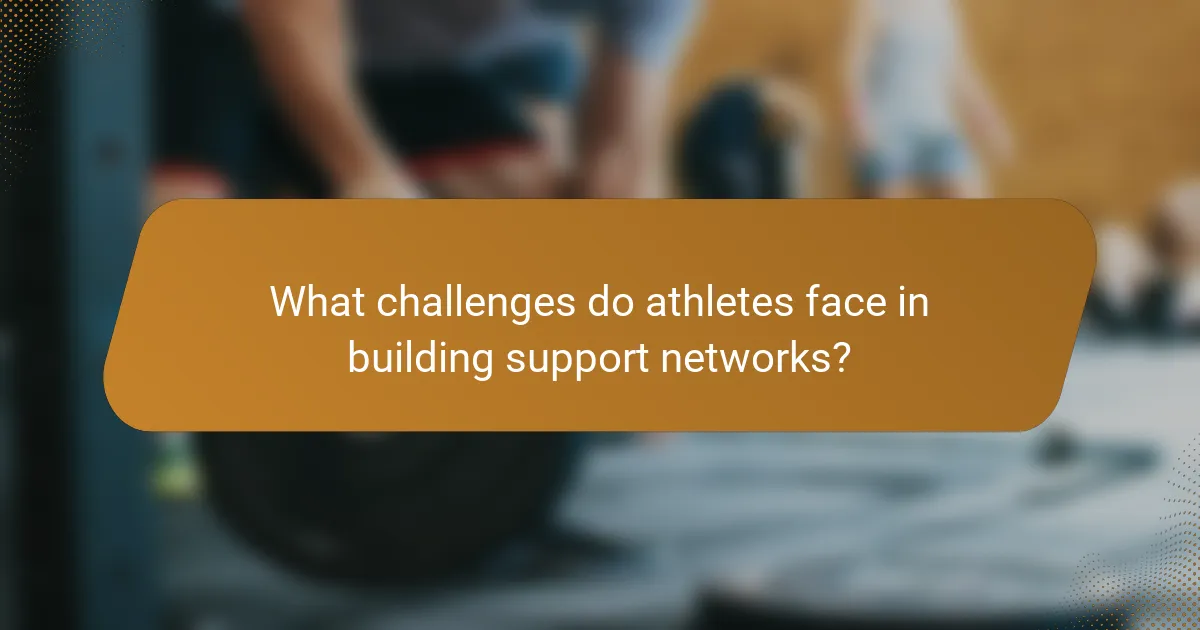
What challenges do athletes face in building support networks?
Athletes face various challenges in building support networks, primarily due to time constraints and the competitive nature of their sport. Limited availability can hinder relationship development with coaches and peers. Additionally, athletes often struggle with vulnerability, fearing judgment or misunderstanding from others. Geographic mobility can further isolate them, as training locations frequently change. Lastly, mental health stigma may prevent athletes from seeking necessary support, impacting their overall well-being and performance.
How can athletes overcome barriers to effective communication?
Athletes can overcome barriers to effective communication by actively engaging with their support networks. Building strong relationships with coaches, teammates, and mental health professionals enhances understanding and collaboration. Regular feedback sessions foster open dialogue, allowing athletes to express concerns and preferences. Utilizing technology, such as communication apps, can streamline interactions and ensure timely updates. Additionally, participating in workshops on communication skills can empower athletes to articulate their needs confidently. These strategies collectively strengthen support networks, promoting better overall performance and well-being.
What role does social media play in athlete advocacy?
Social media plays a crucial role in athlete advocacy by amplifying voices and mobilizing support. It enables athletes to share their experiences, raise awareness on social issues, and connect with fans and communities. This platform fosters a sense of solidarity among athletes and advocates, enhancing their collective impact. Moreover, social media facilitates real-time engagement, allowing athletes to respond promptly to injustices and rally support for causes they believe in.
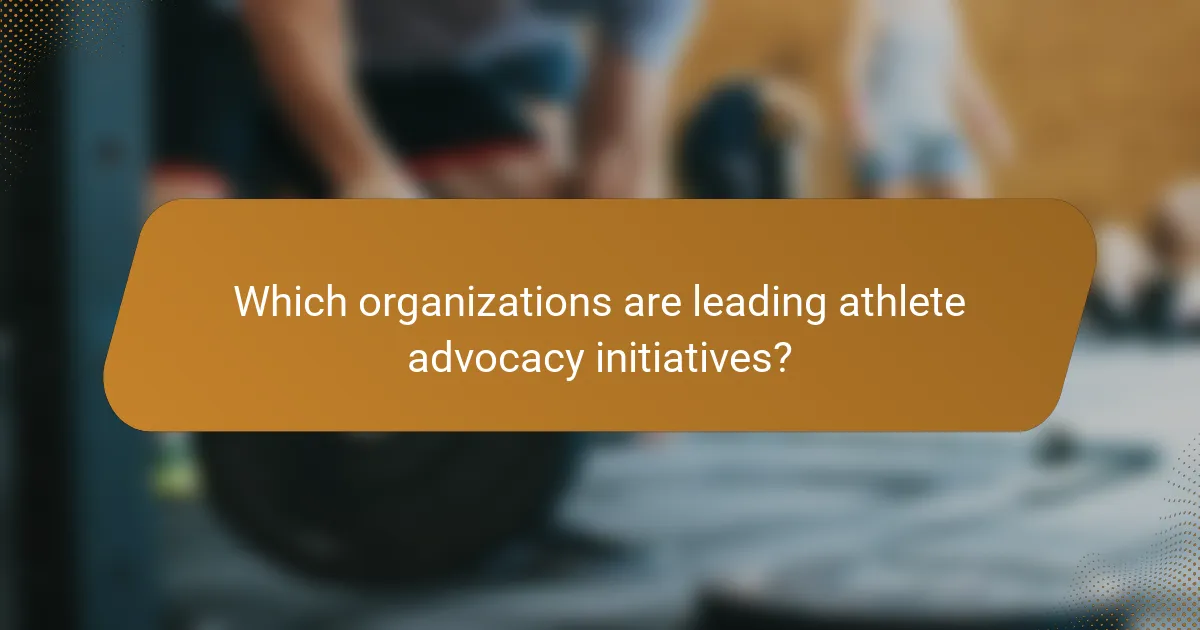
Which organizations are leading athlete advocacy initiatives?
Organizations leading athlete advocacy initiatives include the Professional Athletes Association, the Athletes’ Rights Advocacy Coalition, and the Women’s Sports Foundation. These groups focus on enhancing athlete welfare, promoting rights, and ensuring equitable treatment in sports. They work collaboratively to build robust support networks for athletes, addressing issues such as mental health, safety, and fair compensation. Their initiatives often involve lobbying for policy changes and raising awareness of athletes’ rights globally.
How do regional differences impact advocacy efforts?
Regional differences significantly shape athlete advocacy efforts by influencing cultural perceptions, resource availability, and policy priorities. Different regions may prioritize various sports or athlete needs based on local traditions and values. For instance, urban areas often have more structured support networks compared to rural locations, affecting the effectiveness of advocacy initiatives. Furthermore, local government policies may either facilitate or hinder advocacy efforts, impacting funding and community engagement. Understanding these regional nuances is crucial for tailoring advocacy strategies to be more effective and inclusive.
What partnerships can strengthen athlete support networks?
Collaborations with various organizations can significantly enhance athlete support networks. Strategic partnerships with mental health professionals, nutritionists, and sports organizations provide comprehensive resources. These alliances foster well-rounded support addressing physical, emotional, and nutritional needs. Engaging with community groups and educational institutions can also create mentorship opportunities, promoting holistic development for athletes.
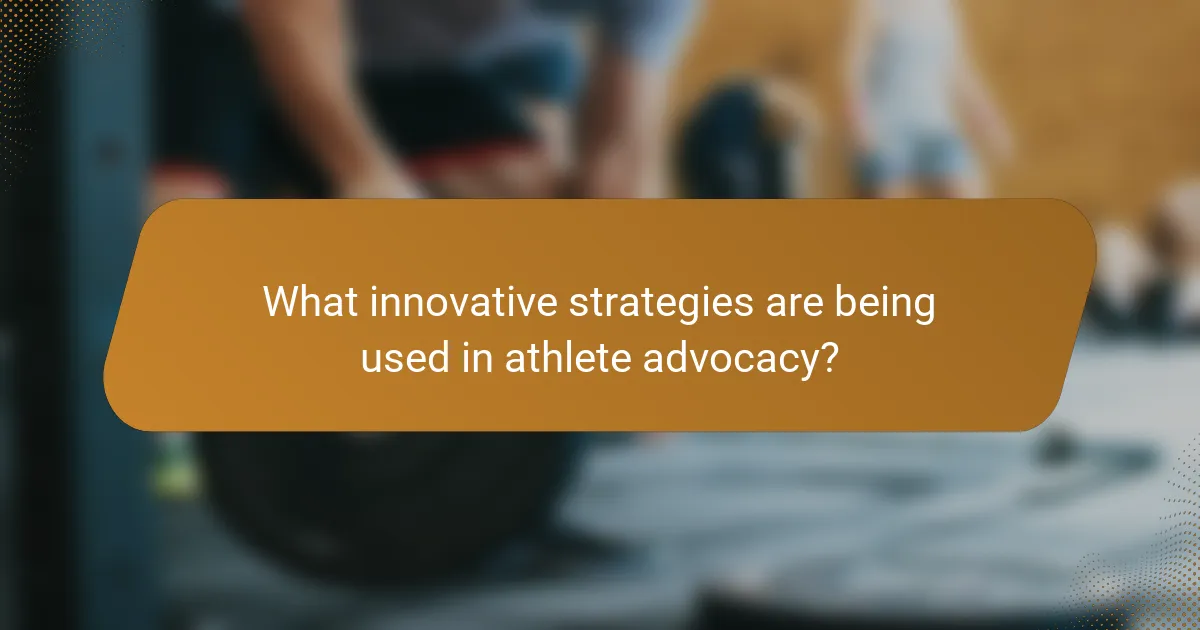
What innovative strategies are being used in athlete advocacy?
Innovative strategies in athlete advocacy focus on building stronger support networks through collaboration, technology, and community engagement. Athletes leverage social media platforms to amplify their voices and connect with fans, creating a broader impact. Advocacy groups utilize data analytics to identify key issues and tailor their approaches effectively. Additionally, partnerships with organizations enhance resource availability, providing athletes with legal and mental health support. These strategies foster a united front, empowering athletes to address social issues and advocate for change.
How can technology facilitate athlete support systems?
Technology enhances athlete support systems by providing real-time data, improving communication, and fostering community engagement. Wearable devices track performance metrics, while apps facilitate direct communication with coaches and support staff. These tools create personalized training plans and mental health resources, ensuring athletes receive tailored support. Additionally, online platforms connect athletes with peers, mentors, and experts, promoting a sense of belonging. By integrating these technologies, athletes can optimize their performance and well-being more effectively.
What role do mentorship programs play in athlete advocacy?
Mentorship programs significantly enhance athlete advocacy by fostering support networks. These programs connect experienced mentors with emerging athletes, promoting personal and professional growth. They provide resources for navigating challenges, enhancing communication skills, and building confidence. As a result, athletes gain a platform to voice concerns and advocate for their rights. The unique attribute of mentorship programs lies in their ability to tailor guidance based on individual athlete needs, creating a personalized approach to advocacy.
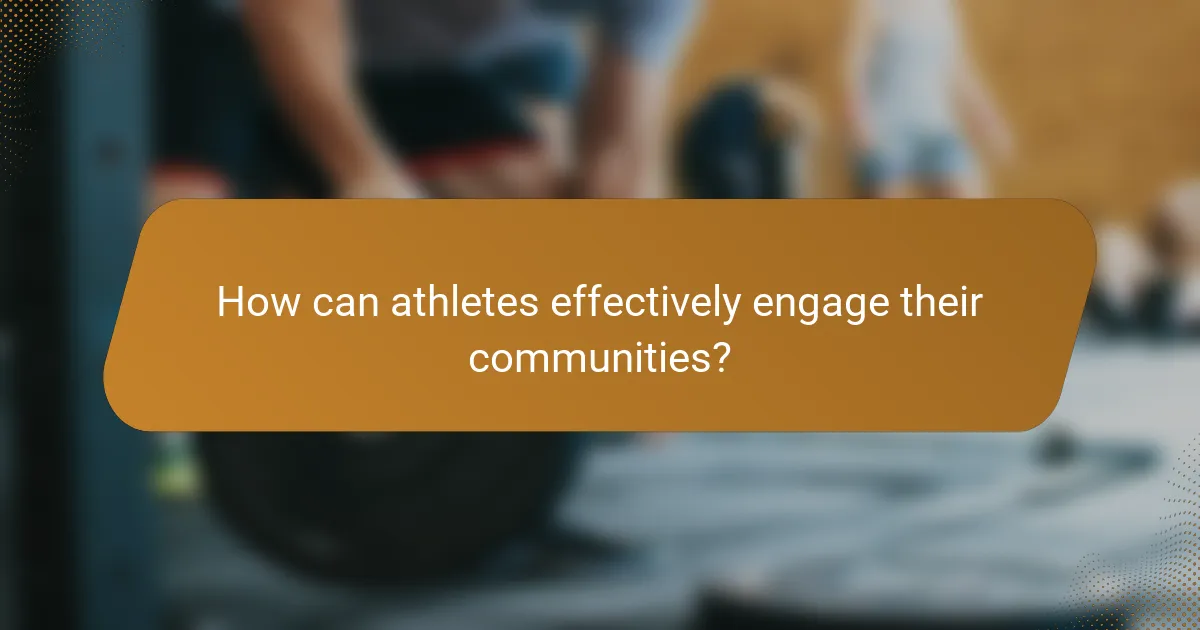
How can athletes effectively engage their communities?
Athletes can effectively engage their communities by actively participating in local events, promoting wellness initiatives, and leveraging social media platforms. These actions build trust and strengthen support networks.
Community involvement fosters connections, enhances visibility, and encourages collaboration with local organizations. For instance, athletes who host workshops or clinics share expertise and inspire youth participation in sports.
Social media serves as a powerful tool for outreach. Athletes can share personal stories, highlight community issues, and promote charitable causes, amplifying their impact.
By prioritizing these engagement strategies, athletes can create lasting relationships and contribute positively to their communities.
What are best practices for organizing advocacy events?
To organize effective athlete advocacy events, focus on clear objectives, strong partnerships, and engaging formats. Start by defining specific goals for the event, such as raising awareness or funding. Collaborate with relevant organizations to expand your reach and resources. Choose interactive formats, like workshops or panels, to actively involve participants. Finally, promote the event through targeted channels to maximize attendance and impact.
How can athletes utilize storytelling to inspire change?
Athletes can utilize storytelling to inspire change by sharing personal experiences that resonate with their audience. This approach fosters empathy and builds stronger support networks. Engaging narratives can highlight social issues, motivate action, and create a sense of community among fans and advocates. For instance, athletes can address mental health, equality, or environmental sustainability through their stories, making complex topics more relatable. As a result, their influence can extend beyond sports, driving meaningful conversations and encouraging collective action.
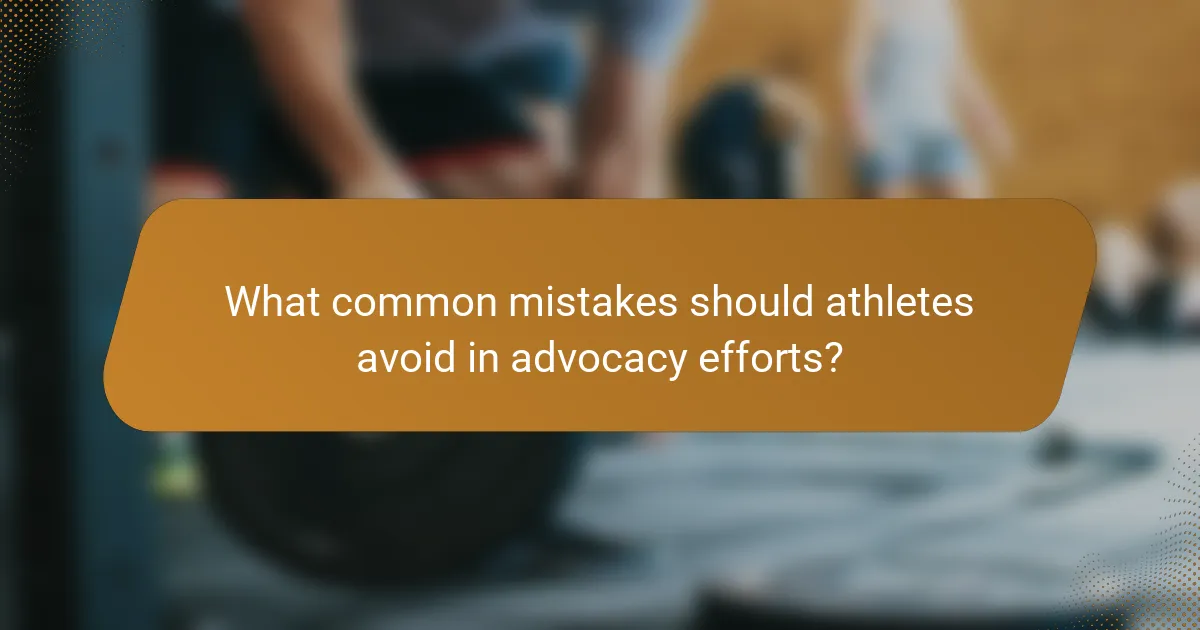
What common mistakes should athletes avoid in advocacy efforts?
Athletes should avoid being overly self-promotional, neglecting diverse perspectives, and lacking clear messaging. These mistakes can undermine their advocacy efforts and alienate potential supporters. Focusing on collaboration and authenticity fosters stronger support networks.
How can athletes ensure their messaging is inclusive and effective?
Athletes can ensure their messaging is inclusive and effective by actively engaging diverse communities and using clear, relatable language. They should prioritize listening to various perspectives, ensuring representation in their advocacy efforts. Collaborating with organizations that promote inclusivity can amplify their message and reach. Regularly evaluating the impact of their communication strategies helps refine their approach, making it more effective over time.
What strategies can help maintain momentum in advocacy campaigns?
To maintain momentum in advocacy campaigns, build strong support networks through consistent communication and engagement. Regular updates keep supporters informed and motivated. Utilize social media platforms to amplify your message and reach broader audiences. Collaborate with other organizations to share resources and enhance visibility. Celebrate small victories to sustain enthusiasm and encourage ongoing participation.
What practical tips can enhance athlete advocacy initiatives?
To enhance athlete advocacy initiatives, focus on building strong support networks. Collaborate with other athletes, organizations, and community leaders to amplify voices and share resources.
Establish clear communication channels to facilitate dialogue among stakeholders. Utilize social media platforms to raise awareness and engage supporters.
Implement training programs that empower athletes with advocacy skills, such as public speaking and negotiation.
Measure the impact of initiatives through surveys and feedback to continuously improve efforts and strategies.
